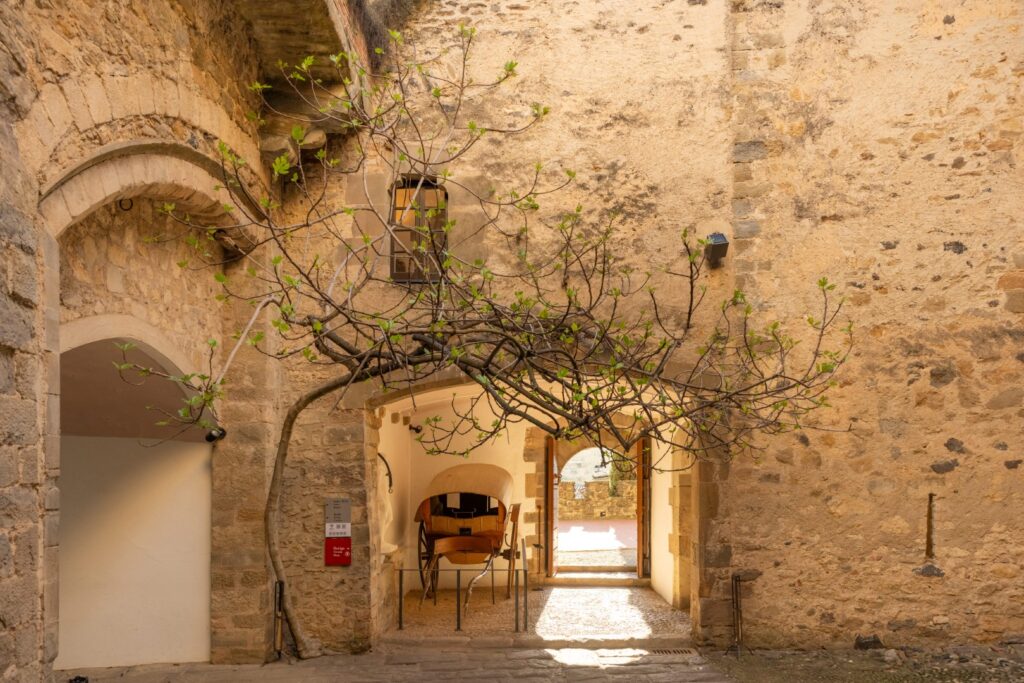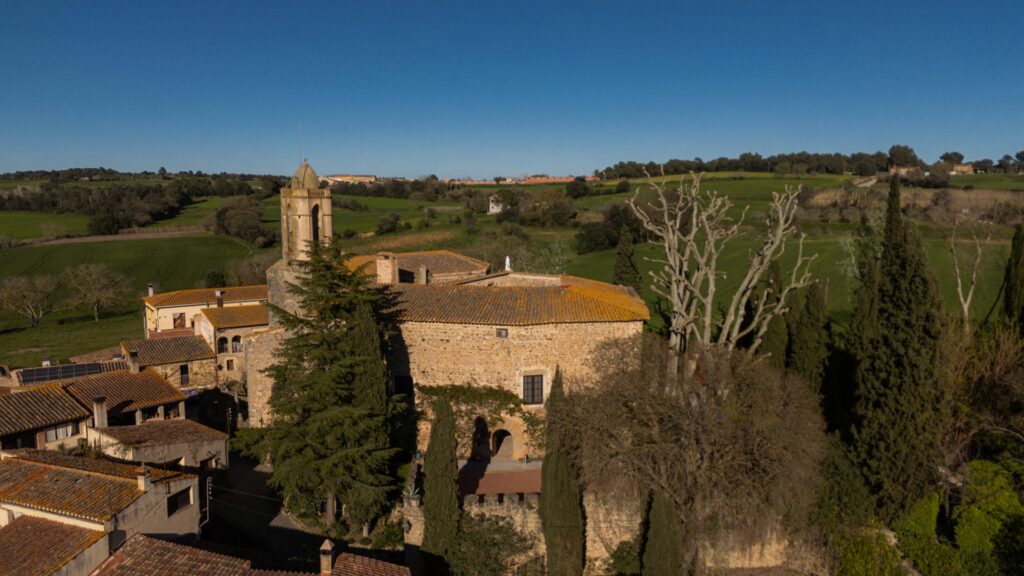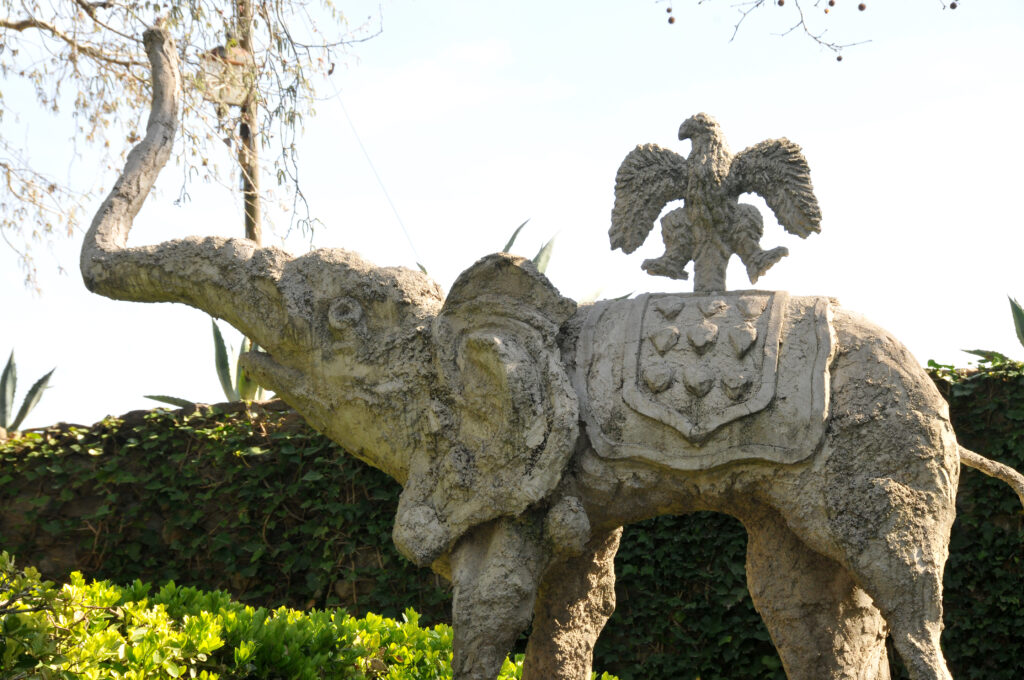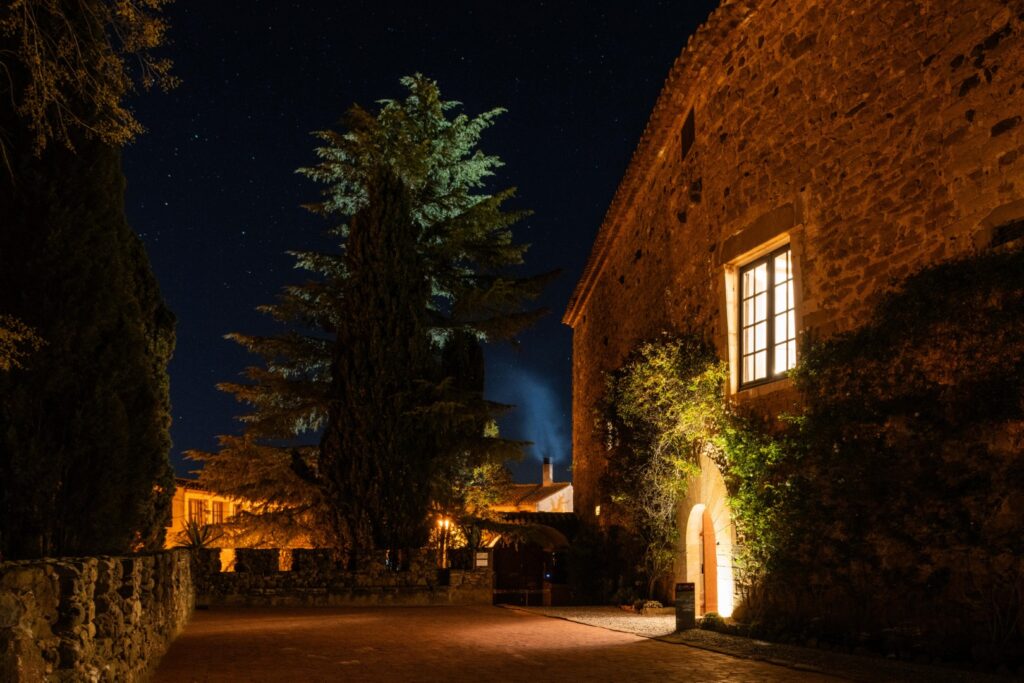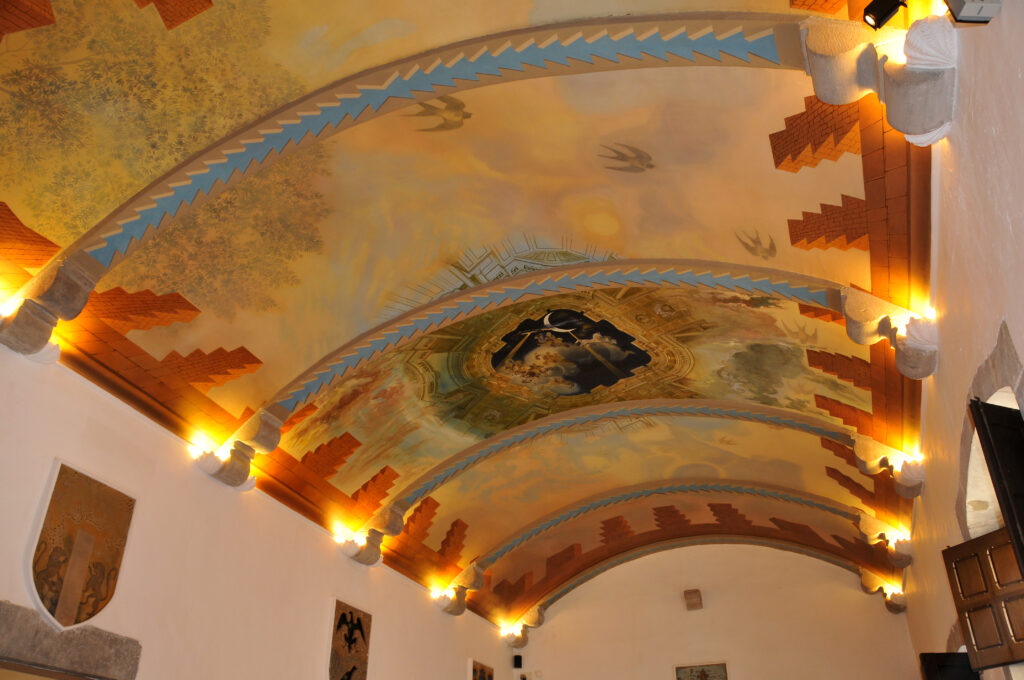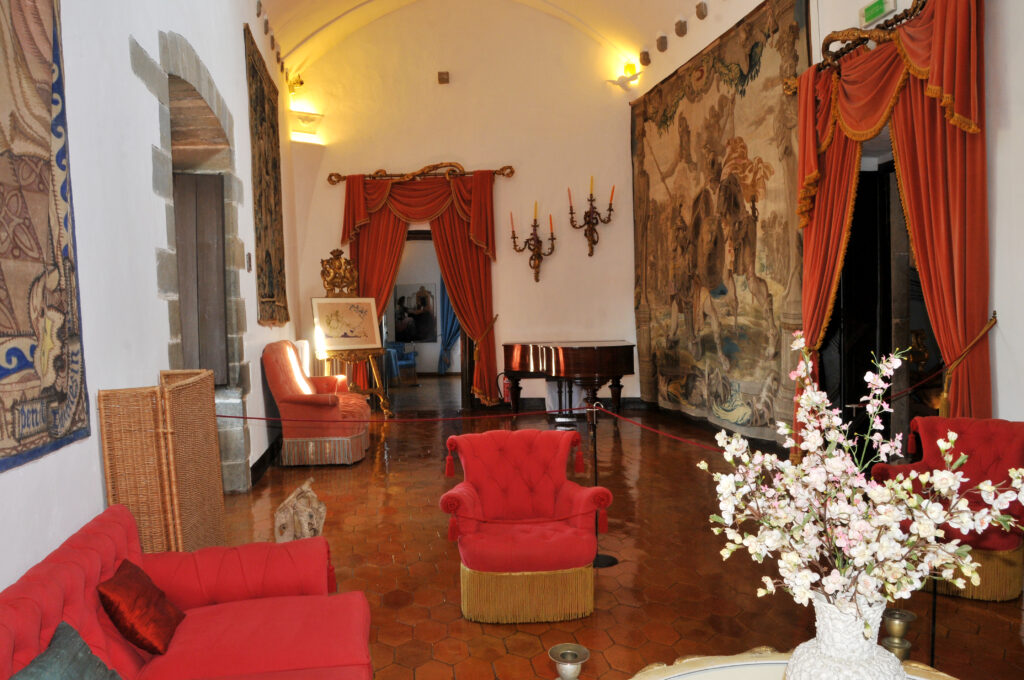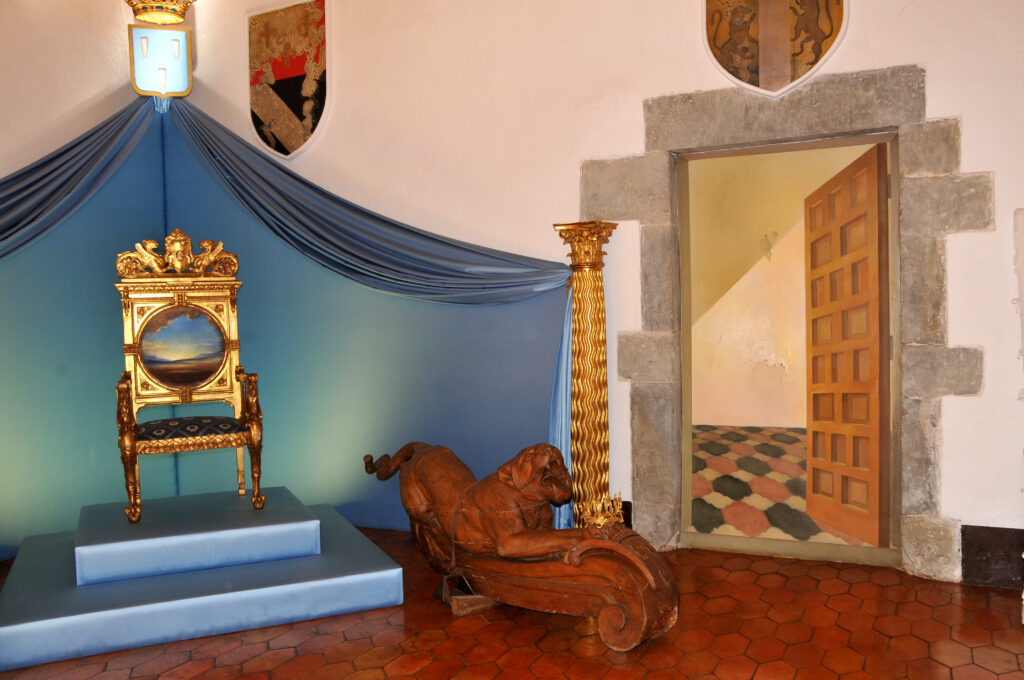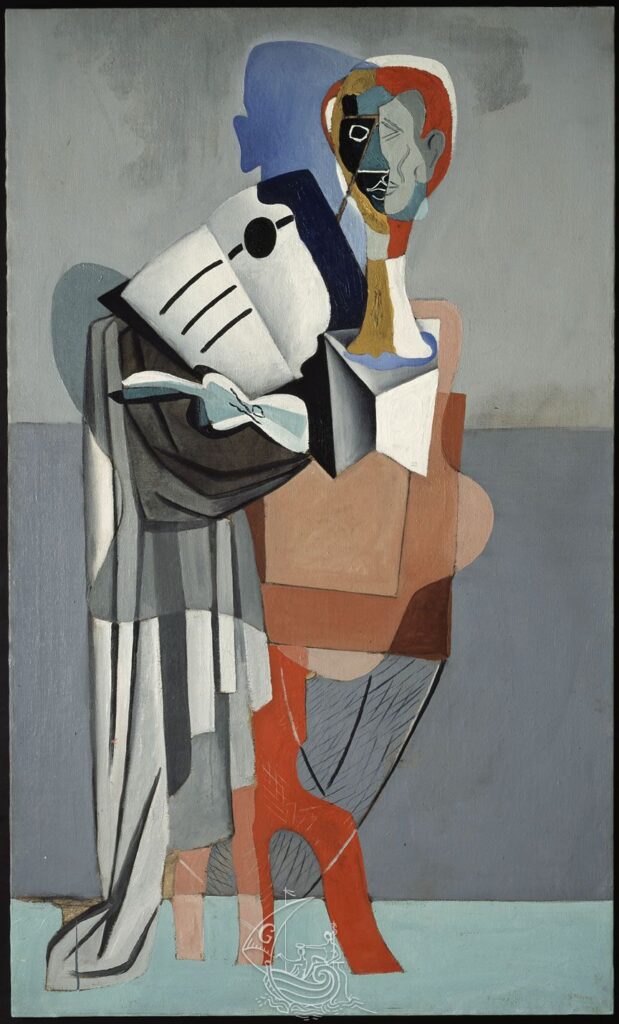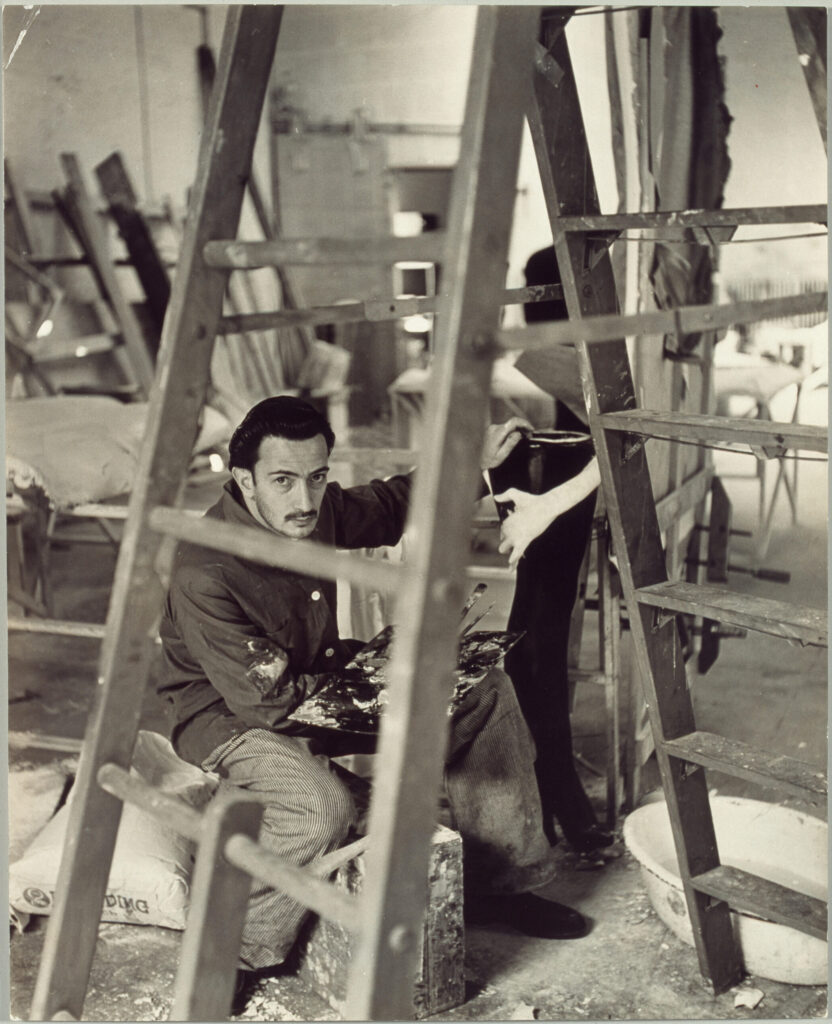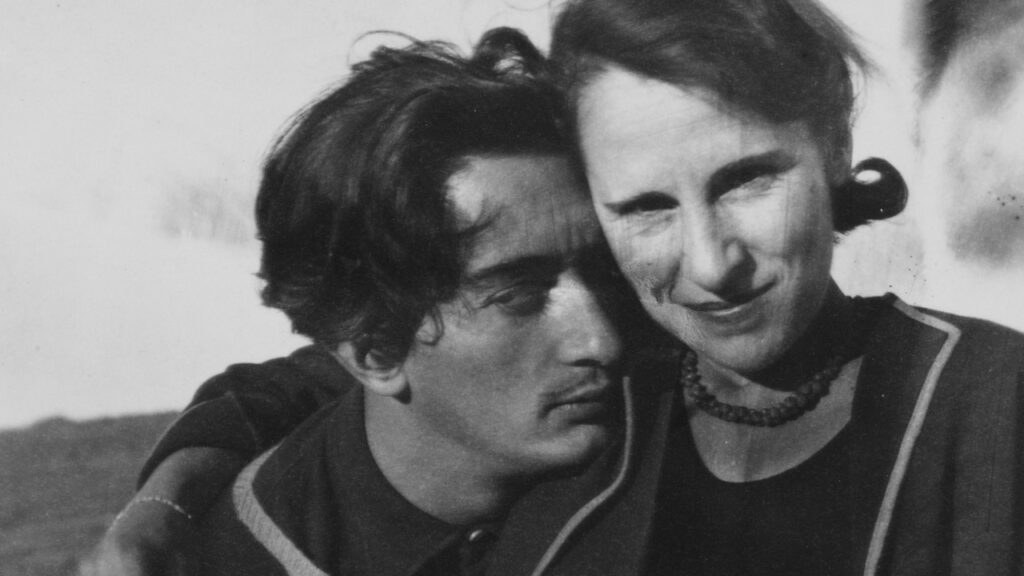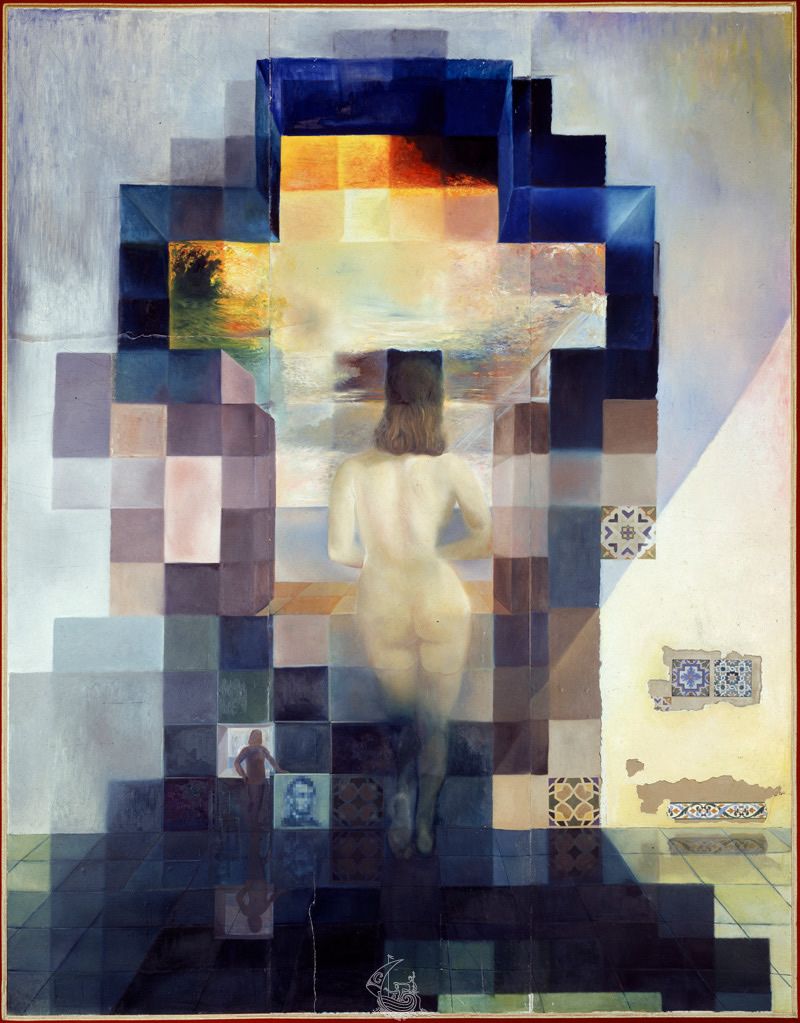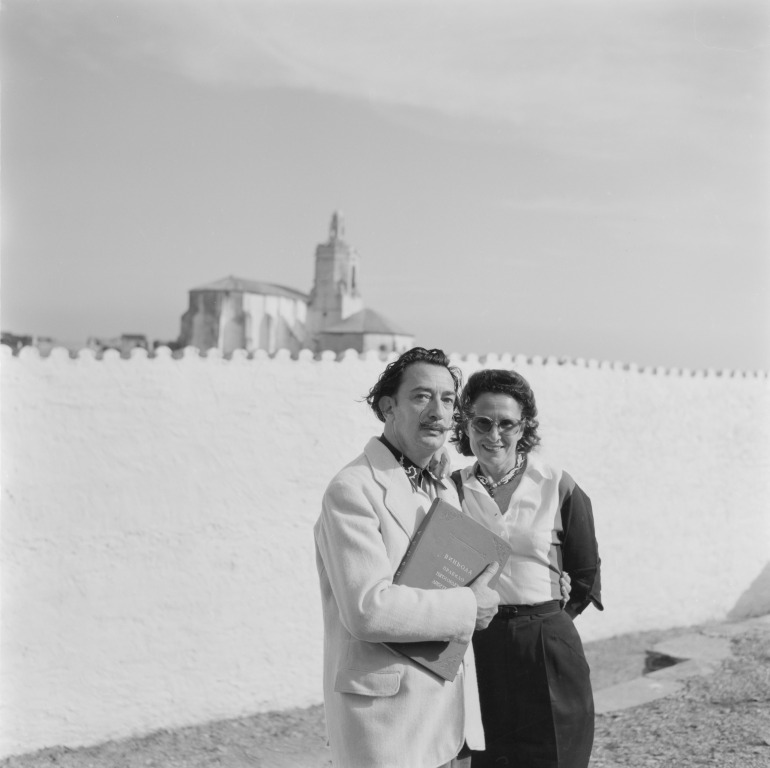La visita
Explora els primers misteris del Castell Gala Dalí i endinsa’t en la seva història, la vida de Gala i l’univers decoratiu de Dalí.
Consultar horaris
Horaris
1 de gener – 6 de gener: obert de dimarts a diumenge, de 10:30 – 17:00*
7 de gener – 13 de març: tancat
1 de març – 14 de març: de dimarts a diumenge, de 10:30 a 17:00
15 de març – 29 de juny: de dimarts a diumenge, de 10:30 a 18:00*
1 de juliol – 7 de setembre: obert cada dia, de 10:00 a 19:00
9 de setembre – 2 de novembre: de dimarts a diumenge, de 10:30 a 18:00
4 de novembre – 31 de desembre: de dimarts a diumenge, de 10:30 a 17:00*
L’accés al museu es permet fins 45 minuts abans del tancament
Les sales tanquen 15 minuts abans de l’hora establerta
*Obertures excepcionals: 14 i 21 d’abril, 9 i 23 de juny, 10 de novembre, 8 i 29 de desembre.
*Tancaments excepcionals: 1 gener i 25 desembre. El dia 24 de desembre, l’últim accés al Castell Gala Dalí és a les 14:10
Plaça Gala Dalí, s/n. 17120 Púbol – La Pera, Girona
Com arribar
Entrada general 10 / 22 €. Entrada reduïda 7 / 18 €
Preus
Aconsellem reservar amb antelació
General: 10,00 € (Web); 12,00 € (Taquilla).
Reduïda: 7,00 € (Web); 9,00 € (Taquilla). Estudiant +18 (cal acreditació), Junior (9-17 anys), Carnet Jove, Jubilat +65, discapacitat 33% i acompanyant discapacitat (cal acreditació), família nombrosa.
Gratuïta: Menors 0-8 anys, Discapacitat 50% i acompanyant (cal acreditació), Amics dels Museus Dalí, Premsa (cal acreditar amb un document professional), ICOM (Cal acreditar carnet ICOM).
Entrada amb visita guiada: 18,00 € (general); 15,00 € (reduïda).
Grups (a partir de 25 persones): 7,00 € (Web); 9,00 € (Taquilla).
1 de juliol – 31 d’agost
General: 12,00 € (Web); 14,00 € (Taquilla).
Reduïda: 8,00 € (Web); 10,00 € (Taquilla).
Entrada amb visita guiada: 20,00 € (general); 16,00 € (reduïda).
Plànol del Castell Gala Dalí
Descarregar
Recomanem que us descarregueu el plànol del Castell Gala Dalí per preparar la vostra visita.
Sobre el Castell Gala Dalí
Més informació
El Castell Gala Dalí
El Castell Gala Dalí de Púbol, obert al públic des del 1996, permet descobrir un edifici medieval on Salvador Dalí va materialitzar un desbordant esforç creatiu pensant en una persona: Gala. I en una funció: un lloc adient per al descans i el refugi de la seva esposa. El pas del temps va determinar la transformació d’aquest espai, que entre 1982 i 1984 es va convertir en el darrer taller de Salvador Dalí i en el mausoleu per a la seva musa.
Itinerari i espais visitables
Documentat des del segle XI, l’estructura bàsica de l’actual edifici, de tres plantes i articulat al voltant d’un pati alt i estret, cal situar-la durant el període de màxima esplendor de la baronia de Púbol: la segona meitat del segle XIV i principi del XV. El recorregut per l’interior de l’edifici és lliure i unidireccional, des de la sala 1 a la sala 10, on es poden visitar les estances del primer pis del Castell on van fer vida Gala i Salvador Dalí. Així mateix, a les golfes (sala 7) s’hi troba un espai destinat a les exposicions temporals.
Els espais exteriors del Castell Gala Dalí estan formats per l’eixida (sala 11), el garatge (sala 13) els jardins i la piscina (sales 14 i 15). Dins l’edifici del Castell, a la sala del Delme, s’hi troba la cripta de Gala (sala 12).
Visites el Castell amb cadira de rodes o tens mobilitat reduïda? Consulta aquí les condicions d’accessibilitat.
Serveis de guiatge
El Castell Gala Dalí ofereix regularment als seus visitants activitats que permeten endinsar-se millor dins el món íntim que Salvador Dalí va crear per a la seva musa i col·laboradora a Púbol.
La introducció a la visita consisteix en una breu contextualització de la història de l’edifici, la vida de Gala, l’arribada dels Dalí a Púbol i explica les principals intervencions de Salvador Dalí a cada espai. Té una durada aproximada de 20 minuts.
La visita guiada ofereix un recorregut per la història del castell i la vida de Gala a partir de les estances que Salvador Dalí va decorar i crear per a la seva companya, així com el darrer taller de l’artista, on va treballar entre 1982 i 1984. Té una durada aproximada de 75 minuts i cal reserva prèvia.
Ambdues activitats es duen a terme per part del personal de la Fundació Gala Salvador Dalí.
Els dies, les hores i els idiomes d’ambdues activitats canvien segons l’època de l’any.
La Direcció es reserva el dret de suspendre o modificar les visites guiades o introduccions si les necessitats organitzatives del museu així ho requereixen.
Condicions d’accés
El recorregut per l’interior de l’edifici del Castell Gala Dalí és lliure i unidireccional.
Compreu l’entrada online. Cal descarregar-se el document de confirmació i mostrar el codi de reserva a la taquilla o entrada.
No es fan canvis ni devolucions per causes alienes al Museu.
Està prohibit fer fotos amb flash i altres complements fotogràfics.
Es prohibeix fumar, menjar i beure a l’interior de l’edifici i llençar objectes als patis, jardins o carrer.
No es permet cap tipus de visita guiada sense el vist i plau previ del Museu.
Tots els visitants hauran de mostrar i conservar la seva entrada, així com, en cas de reduïda o gratuïta, l’acreditació corresponent.
Els menors de setze anys hauran d’entrar, obligatòriament, acompanyats d’un adult.
Al control d’accés es revisaran les bosses, motxilles, etc. Per raons de seguretat, es retindran aquells objectes susceptibles de ser perillosos (ganivets, navalles, etc.) que hauran de ser recollits al final de la visita.
No es permet l’entrada amb cap tipus d’objecte superior a 35 x 35 x 25 cm, equipatges o objectes d’embalum en general, motxilles o altres bosses penjades a l’esquena, cotxets o qualsevol objecte que el personal autoritzat consideri un risc per a la seguretat del museu.
No es poden dipositar a la consigna objectes d’embalum, éssers vius, joies, diners o objectes de valor, perillosos o que atemptin contra la seguretat o salut pública.
El museu no es fa responsable en cap cas dels objectes dipositats a la consigna.
No s’accepten animals de companyia (tret de gossos pigall).
La indumentària haurà de ser respectuosa per a totes les sensibilitats. Especialment s’impedirà l’accés de visitants amb vestits i/o accessoris que puguin representar un obstacle en cas d’evacuació d’emergència.
No està permès desplegar cartells, pancartes o realitzar qualsevol tipus de performance reivindicativa dins l’edifici, sent això motiu d’expulsió immediata.
És d’obligat compliment seguir les indicacions del personal del museu en tot moment.
Serveis i accessibilitat
La consigna està ubicada al punt d’Informació, a la planta baixa del Castell Gala Dalí. Per motius de capacitat, només s’hi dipositaran objectes voluminosos o que puguin ser considerats un risc per part del personal del Castell.
La consigna del Castell Gala Salvador Dalí disposa de cadira de rodes a disposició dels visitants. Consulteu la seva disponibilitat al personal del Castell.
La botiga i els lavabos es troben situats a la planta baixa.
Les característiques arquitectòniques del Castell Gala Dalí de Púbol, un castell medieval del segle XIV-XV, dificulten l’accés a l’edifici a persones amb mobilitat reduïda. Els espais i estances del Castell de Gala Dalí estan adaptats per a persones amb mobilitat reduïda, a excepció del bany de Gala (sala 4), la sala de l’exposició temporal (sala 7) i la cripta (sala 12).
L’accés per a persones en cadira de rodes és pel portal del carrer de darrere l’església, carrer Fora Muralla s/n. Des del mateix portal es pot avisar el personal del museu per intèrfon.
Per més informació consulta la pàgina d’accessibilitat.
Normativa específica per a grups i dret de paraula
No es permet cap tipus de visita guiada sense el vist i plau previ del personal.
Guies, professionals i acompanyants que desitgin realitzar un guiatge dins el Castell Gala Dalí hauran de sol·licitar una autorització prèvia al punt d’Informació.
En cap cas es permet realitzar explicacions per un grup de més de 25 persones.
El personal de sala té la potestat de vetllar pel compliment d’aquestes mesures.
Política de reportatges
Es poden fer fotos sense flaix ni trespeus ni equips professionals. Si es dóna el cas, es podrà retenir la màquina fins que el seu propietari finalitzi la visita. La comunicació pública de les imatges preses a l’interior dels museus Dalí estan subjectes a llicència d’ús i liquidació de drets.
Sol·licita un reportatge.
Grups amb necessitats especials
Vols visitar el Teatre-Museu Dalí amb un grup amb necessitats especials? Els Museus Dalí estan adherits a la xarxa Apropa Cultura. Si no en formes part, inscriu-te al registre d’entitats i gaudeix de nombrosos avantatges.

